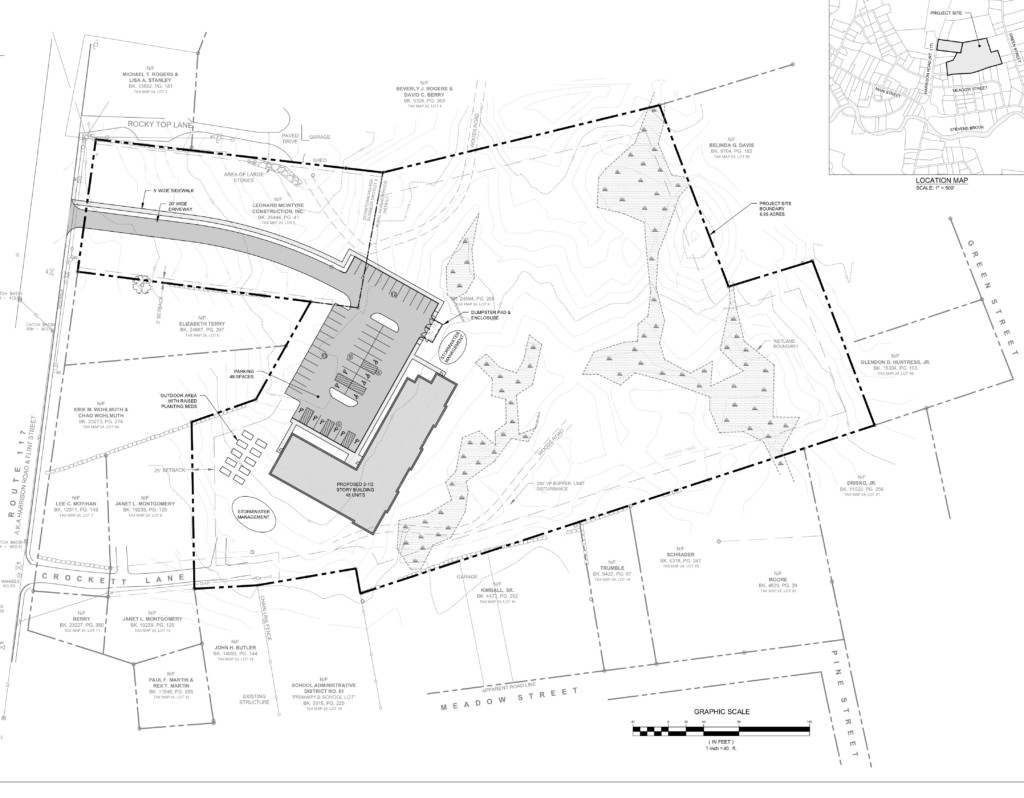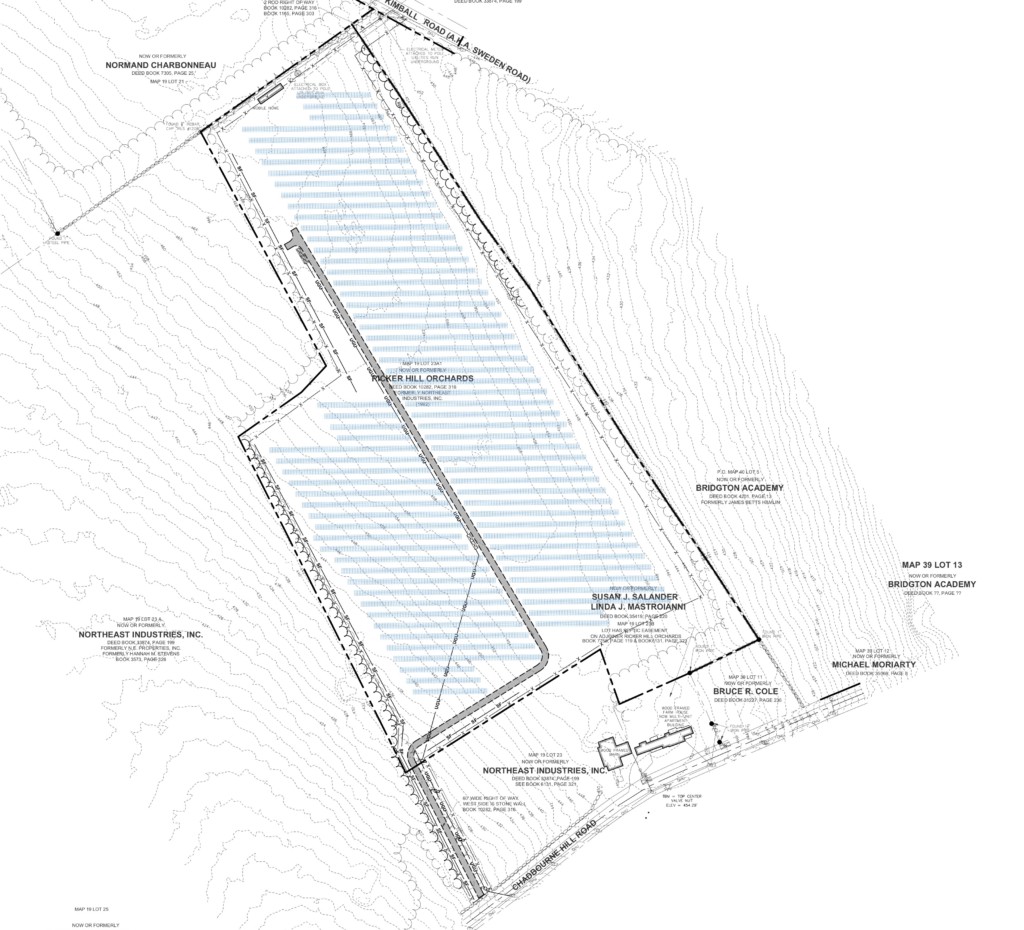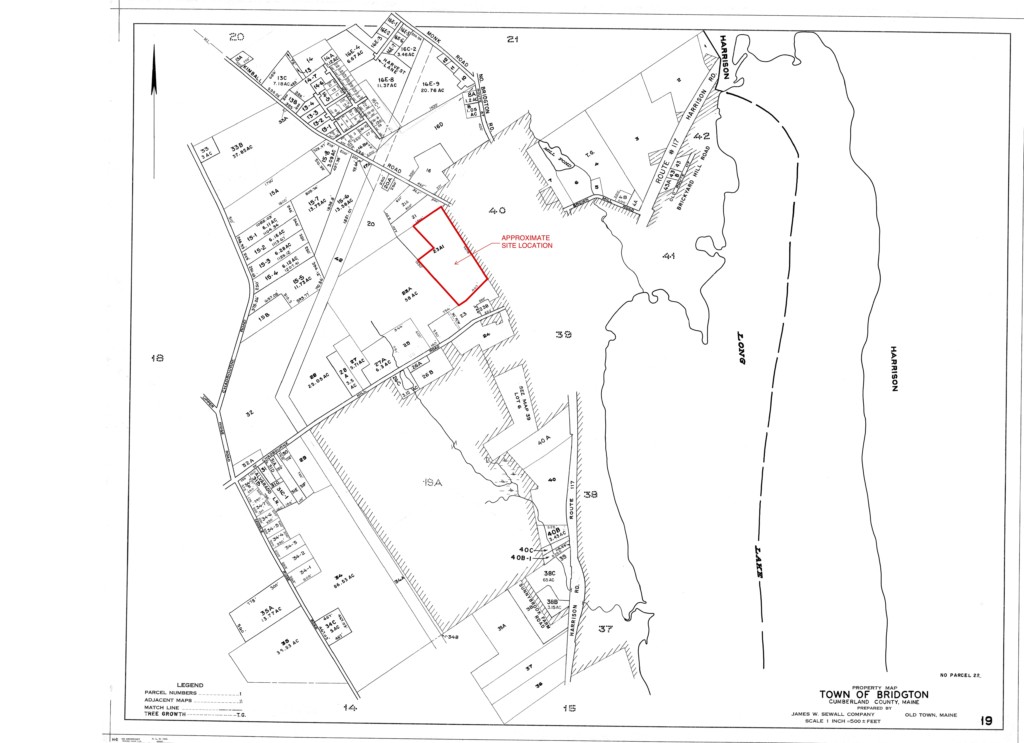Bridgton planners hear proposals for housing development, solar farm and events space

By Wayne E. Rivet
Staff Writer
A 48-unit “age and income restricted” residential housing development is proposed for a seven-acre site at 15 Harrison Road.
Laura Reading of Developers Collaborative (DC), a Portland-based development group, and Michael Tadema-Wielandt of Terradyn Consultants LLC of New Gloucester made a pre-application presentation to the Bridgton Planning Board at their last Tuesday “virtual” meeting. The presentation was an “introduction” to the project and a chance for developers to receive initial feedback from the Planning Board.
In a letter to planners, Tadema-Wielandt wrote, “A significant portion of DC’s work focuses on affordable housing development utilizing Low Income Housing Tax Credits (LIHTC) managed by the Maine State Housing Authority. Over the last 10 years, DC has been among the most prolific tax credit developers in Maine, having developed 15 LIHTC projects in the state. The proposed project will be their 10th senior LIHTC project in Maine.”
DC will own and manage the facility.
The building targets residents 55 years and older, meeting certain income requirements.
The “L” shaped structure will be 2 1/2 stories high. The project combines two parcels — a “smaller” piece (an acre-plus) that will be used as two-lane, lighted road leading to the development, and a “larger” piece (just under six acres) that will include a parking lot and housing unit — and thus will fall under the town’s subdivision guidelines.
The smaller piece is in the Downtown Village Business District (1.14 acres); the larger piece (5.81 acres) is in the Rural Neighborhood District. Planning Board Chairwoman Deb Brusini pointed out that while there are amendments proposed to the Land Use Ordinance which will be needed for a housing development on North High Street to move forward, no Land Use Ordinance changes are needed for the 15 Harrison Road project to move forward.
Due to wetlands on the site, development will occur closer to Crockett Lane (or the southwest corner of the property).
The development would tie into the town’s water and future wastewater disposal systems. Developers said the parking area would feature 48 spaces. Through experiences with other senior housing projects, 60 to 80% of residents own vehicles, so developers went with a 1-to-1 parking ratio with “a handful number of spaces leftover for visitors.” LED fixtures will be used.
“No light will trespass across property lines,” Tadema-Wielandt said.
While there will be a sidewalk along the access road to the development, residents could also use nearby Crockett Lane (a dead-end street) if they choose to walk toward Bridgton’s Main Street.
The property will also include planting beds and outdoor area for residents to use.
Single family houses occupied both parcels in the past, but were removed (approximately) in 2008.
Reading said the Bridgton project would be similar to River Landing in Topsham. According to the website, “River Landing is a 36-unit affordable senior housing project on Elm Street in Topsham. This project removed and replaced an empty, deteriorating commercial building with a three-story structure designed to be compatible with the surrounding historic neighborhood.”
Reading made an informal presentation to selectmen several weeks ago, partly because she attempted to gauge the board’s feelings about the development falling under a TIF (Tax Increment Financing is a public financing method that is used as a subsidy for redevelopment, infrastructure, and other community-improvement projects).
“This project fits well with the Maine Housing Tax Credit Program. It’s a competitive application process with the highest score gets funding,” Reading said.
She noted that several factors, such as access to healthcare services, would place Bridgton high on the points list. Securing a TIF agreement would also push the project up the list. Reading pointed out that of 14 recent applications, five successful proposals all had TIFs as part of the package.
The 48-unit project would likely add $2.2 million to the town’s tax rolls, whereas the property in its undeveloped state garners about $2,300. Reading said a 30-year TIF agreement would be sought, although selectmen might be more comfortable with a 20-year agreement.
“We’re interested in putting together the Site Plan application quickly,” Reading told planners. “We’re hopeful the process goes quickly.”
If approved and funding secured, construction would start in June 2021 and completion in June 2022.
Planner Greg Watkins reminded developers that the project is very close to residential homes, which traffic and lighting issues could pose a problem to neighboring property owners.
Formal application submission and review by planners could take place in June (no firm date had been set as of this posting).
In other discussion:


Apple orchard to solar farm. An old apple orchard on Chadbourne Hill Road could become a solar farm.
After ruling the application by BD Solar North Bridgton LLC (Dirigo Solar of Portland) incomplete, planners heard a brief presentation by Sean Thies of CES Inc. (Engineers, Environmental Scientists, Surveyors), a senior project manager.
The property would house 15,120 solar panels, with a gravel access road up the middle of the 21.5-acre property (Lot 23-A-1 Tax Map 19). The property is currently owned by Ricker Hill Orchards of Turner, according to the permit application.
The project consists of a 4.99 Megawatt solar array to generate power that will be sold under a power purchase agreement to Central Maine Power.
“The project intends to sell its power under the Maine Public Utilities Commission’s long-term contracting authority or one of the recently enacted solar programs…Ultimately, the project will contribute to the state’s climate goals to reduce carbon emissions and will support lowering power prices for Maine ratepayers,” CES stated in the application.
The existing apple orchard would be converted to a “meadow,” and land cover would be maintained to the standards of DEP’s meadow buffers. The area will be mowed twice a year, and motorized vehicle traffic there will be limited to panel maintenance.
“Once operational, the project will be unmanned…BD Solar is not proposing exterior lighting or signage, other than the required safety signage,” according to the application.
Planners requested photos and manufacturer’s spec sheets. CES has contacted the fire chief and Public Services director to review the project.
CES has submitted a site location of development application to the Maine Department of Environmental Protection.
Six abutters received registered notification regarding the project filing.
Barn to event space. For 23 years, Terry and Sandy Swett have operated a “mom & pop” sign shop out of a barn at their Brown Mill Farm. As they approach semi-retirement, the Swetts would like to take a portion of the barn and create an “events area.” As a musician, Terry can foresee the space being used for acoustic performances, possibly story-telling nights or a business meeting space. For social events, catering would be used.
“There are a lot of possibilities,” Swett told planners.
Three entry/exist points presently exist. The space is about 25-by-30 feet.
Planner Dee Miller requested a detailed layout of the space.
“I know your property, it’s lovely,” she said. “It’s a good idea, but I want to know more about it.”
Planner Paul Tworog wondered what existed for roadway and parking. Swett said parking would take place in a grassed area.
“I don’t want it to be a full-time job,” he said.
Planners encouraged the Swetts to work with Community Development Director Linda LaCroix and Code Enforcement Officer Brenda Day in formulating their plan. The proposal falls under the town’s Site Plan Review Ordinance.

